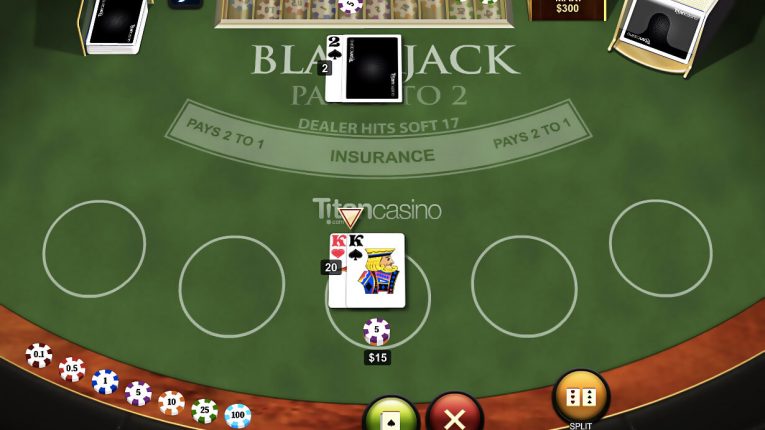
Blackjack rules – values and payouts
Blackjack is one of the most exciting and accessible card games in the world. It is still unknown exactly where it originated – some believe it was in France, others in Spain or even in ancient Rome, but blackjack is undoubtedly one of the most popular casino games around the world.
In the 20th century, blackjack became a must-play game in all casinos, capturing the minds of those who played it and tried to achieve proficiency in it.
In general, the rules of blackjack are fairly simple and can be mastered in a few minutes. However, each blackjack variant has its own rules, which are described on the page of the corresponding variant. On the same page, you’ll find general rules that apply to all types of blackjack.
Each round of blackjack begins with all players at the table placing bets on the betting slots (“boxes”) which they occupy. Information about the minimum and maximum bets is displayed on the table, and you can select the size of the bet by clicking on a chip of the appropriate denomination. After the bets are placed, the dealer deals two face up cards for each box and himself either one face up card (European blackjack) or one face up card and a second face down card (Atlantic City).
The best hand is an ace and ten (including jacks, queens, and kings) on the first two cards. Such a hand is called a “blackjack. Such a hand cannot be beaten, but a draw is possible if the dealer also has blackjack. It should be noted that the winnings for blackjack are higher, and you can get as much as 3 to 2 (3:2) depending on the type of blackjack.
Blackjack Card Values and Payouts
Winning a blackjack hand usually pays out a 1-to-1 (1:1, also called “even money”) payout. That is, if you bet 10 chips, you will receive 10 chips and your bet will be refunded. If you have blackjack (and the dealer doesn’t), in the blackjack variant, whose rules say that the winnings are paid out 3 to 2 (3:2) in such a case, you will receive 15 chips and your bet will also be refunded.
If your hand and the dealer’s hand are tied, it’s called a “push”. You simply get your bet back when you lose a hand. If you lose a hand, you lose your bet. Exceptions to these standard rules are described below and in the individual Blackjack pages.
When a dealer completes a hand, the winnings are paid out. The dealer plays by precise rules, which vary slightly from game to game, so it’s a good idea to read the rules carefully to familiarize yourself with the various types of blackjack.
One of these differences is the dealer’s action in a soft 17 situation. Usually, the dealer takes cards until he reaches 17 or more points. However, in some varieties, the dealer may stop at soft 17, and in others, take another card. In all varieties of blackjack, the dealer takes a card on any hard or soft 16 or less.
Card splitting, doubling up, and no-trump
Depending on the first two cards, additional actions may be available.
One such action is split (“split”), which essentially turns one hand into two. Splitting a hand is done as follows:
- If both starting cards have the same value (king and queen, two eights, etc.), a new hand can be created by placing another bet equal to the starting hand.
- Both hands are played independently of each other, meaning that each wins, loses, or draws separately from the other.
- In some varieties of blackjack, the split can be done several times.
- Also in some situations, doubling down becomes available so you can double your initial bet.
This happens in the following way:
- After the first two cards are dealt, the player can make an additional bet equal to the initial bet and receive exactly one additional card.
- In some blackjack variations, you can double your bet with any two first cards; in others, you can only double with certain cards.
In games where doubling is allowed, you can do so after splitting, and several other aspects are taken into consideration:
After splitting two or more hands, doubling the bet may be available.
Doubling after splitting follows the same rules as normal doubling.
Additional restrictions may apply when splitting aces. In most forms of blackjack, when splitting two aces, you’re only allowed to draw one card for each of the new hands. This means you can’t take additional cards, split cards, or double your bet.
There is another aspect of blackjack that you can take advantage of. This is the refusal to play (“sarrenda,” i.e., surrender). If the variety you are playing allows it, you can discard the cards you receive and get 50% of your bet back. However, there are some restrictions, such as if the dealer has an ace or a card worth 10 points.